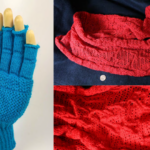 Knitting is a centuries old past time, and whilst for much of that time the work was done by human hand, recent years have seen a number of new technologies emerge to play a part. Despite considerable advances, the machines that make the majority of our clothing today are still far from infallible.
Knitting is a centuries old past time, and whilst for much of that time the work was done by human hand, recent years have seen a number of new technologies emerge to play a part. Despite considerable advances, the machines that make the majority of our clothing today are still far from infallible.
Researchers from MIT’s Computer Science and Artificial Intelligence Laboratory (CSAIL) have come up with an automated system they believe not only streamlines the process but makes it more effective too. For instance, InverseKnit is able to take photos of knitted patterns and translate them into instructions for knitting machines to then follow and turn into clothing.
“As far as machines and knitting go, this type of system could change accessibility for people looking to be the designers of their own items,’‘ the authors explain. “We want to let casual users get access to machines without needed programming expertise, so they can reap the benefits of customization by making use of machine learning for design and manufacturing.”
Customized knitting
The team also developed a CAD tool for customized knitting that lets non-experts utilize templates for adjusting various patterns and shapes.
The technology began by being fed a dataset of knitting patterns with corresponding images that matched those patterns. The neural network was trained to interpret 2D knitting instructions from these images. When the system was then tested, it was able to generate accurate instructions around 94% of the time.
“Current state-of-the-art computer vision techniques are data-hungry, and they need many examples to model the world effectively,” the researchers say. “With InverseKnit, the team collected an immense dataset of knit samples that, for the first time, enables modern computer vision techniques to be used to recognize and parse knitting patterns.”
At the moment, the system is only capable of working with a fairly small sample size, but the team plan to expand this in the hope that it will enable InverseKnit to work on a larger scale.